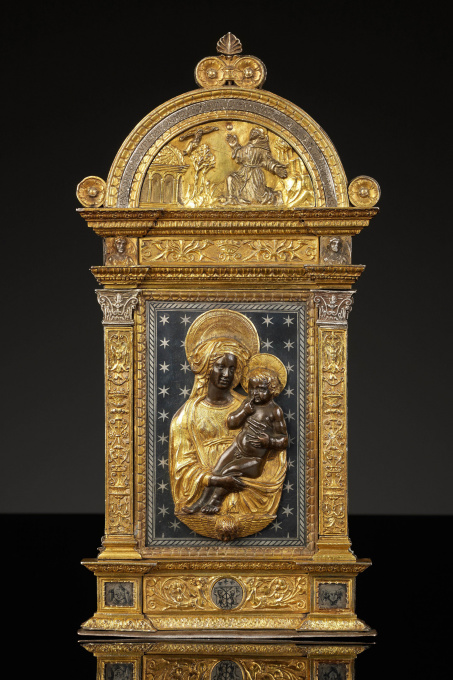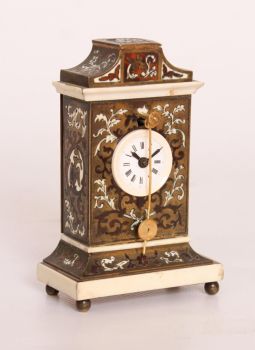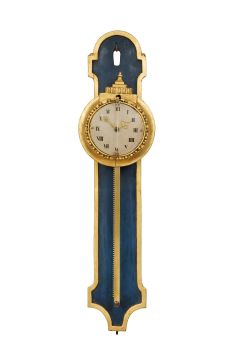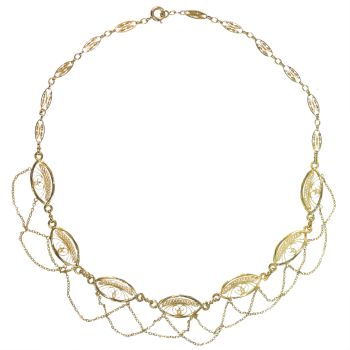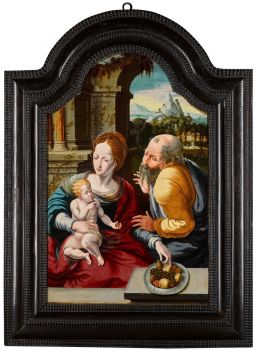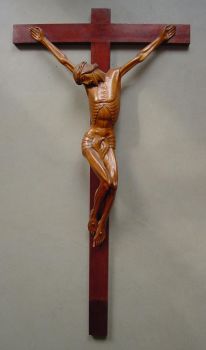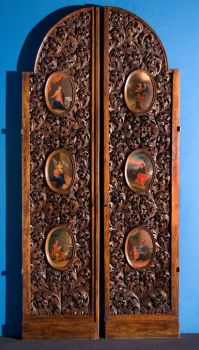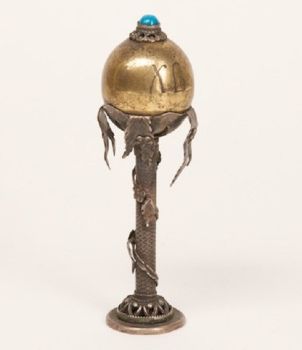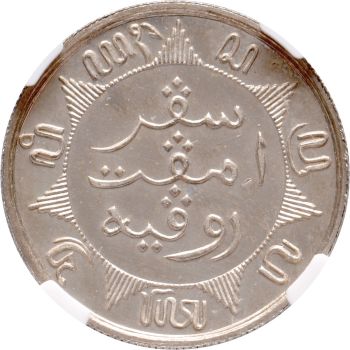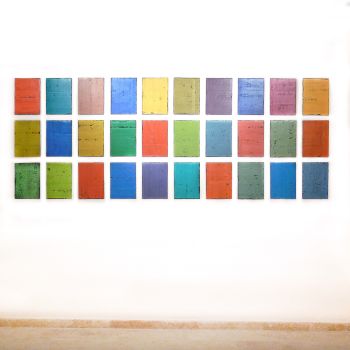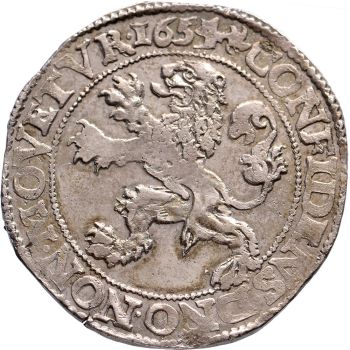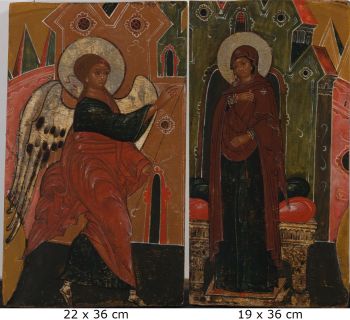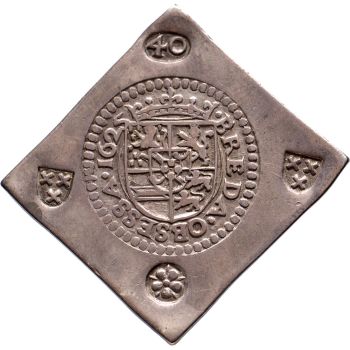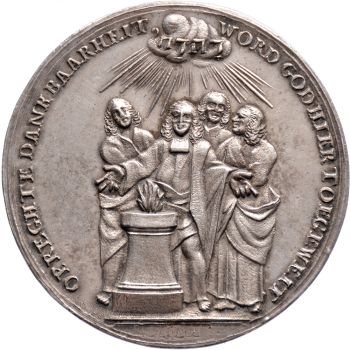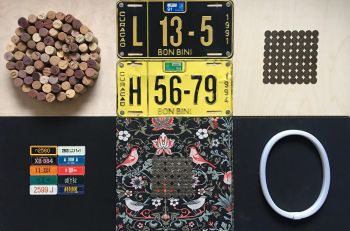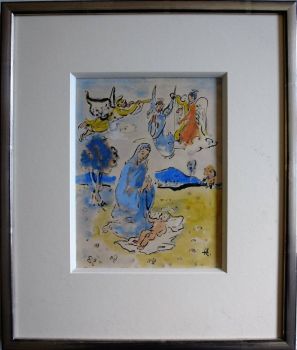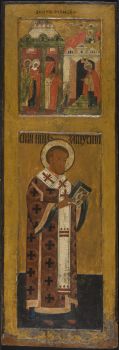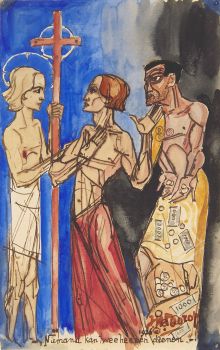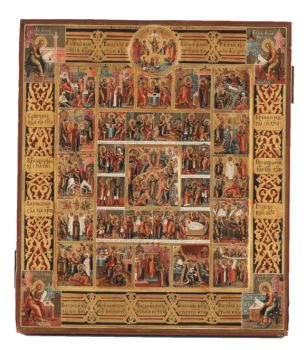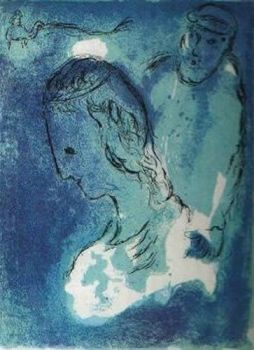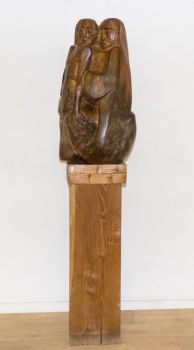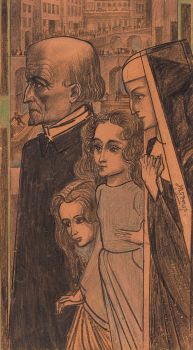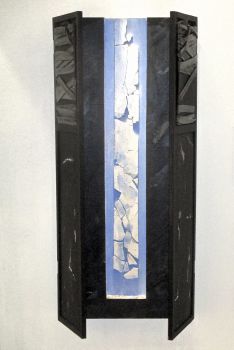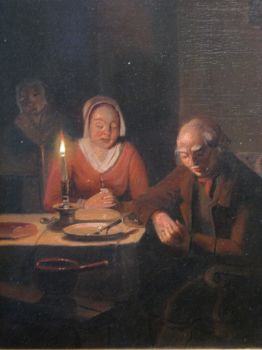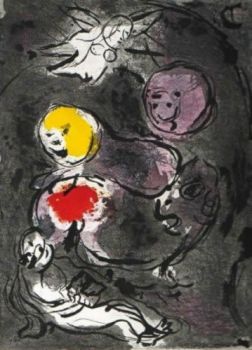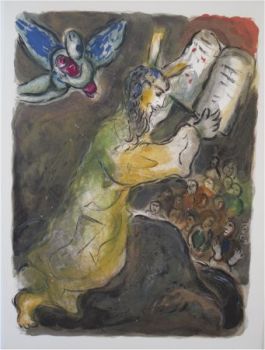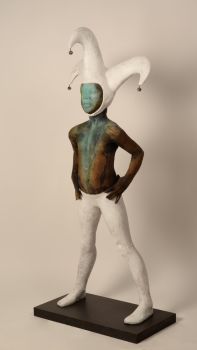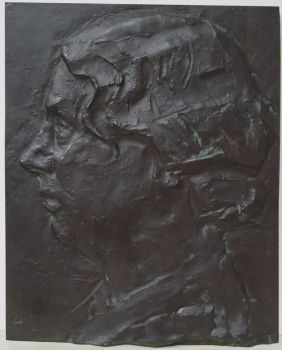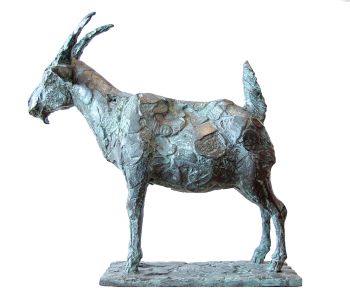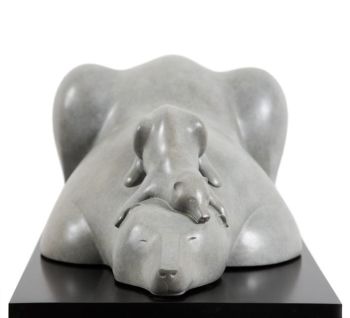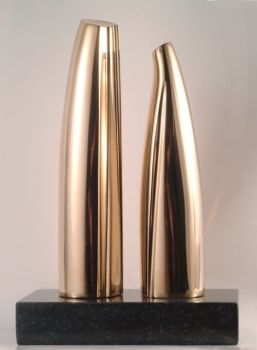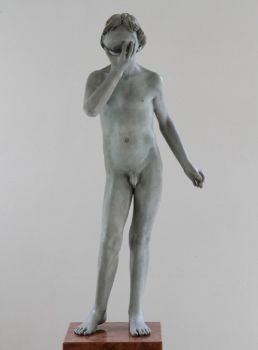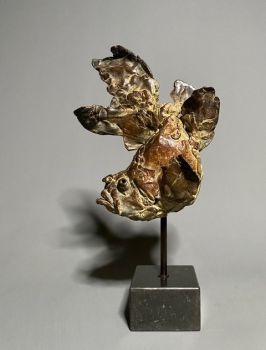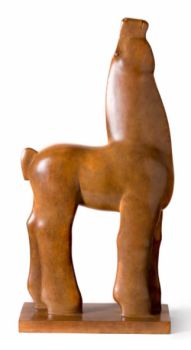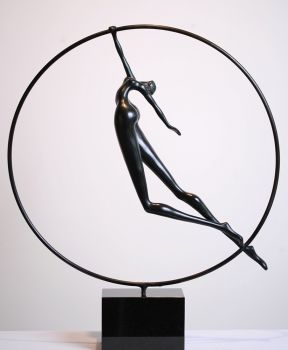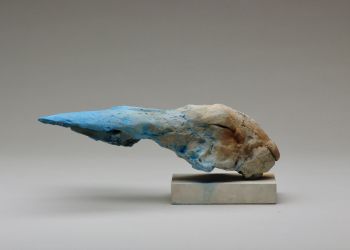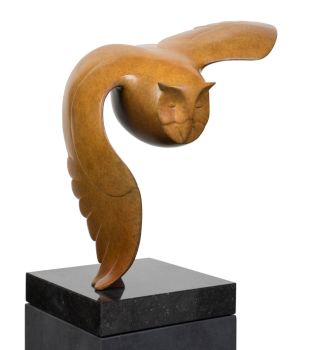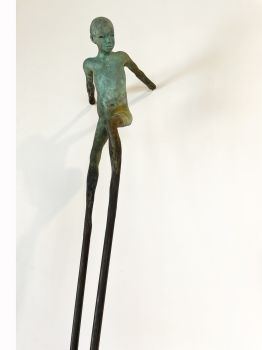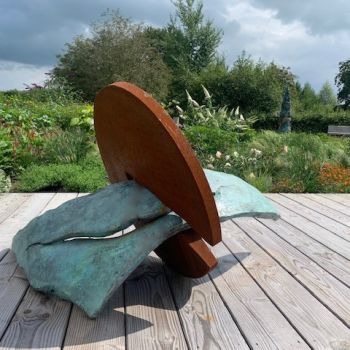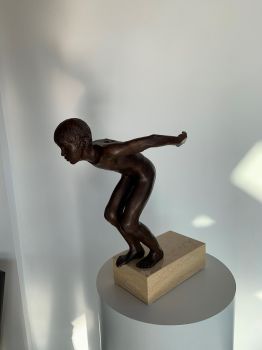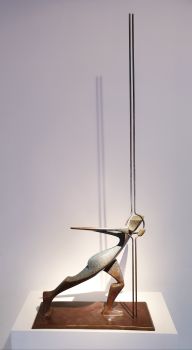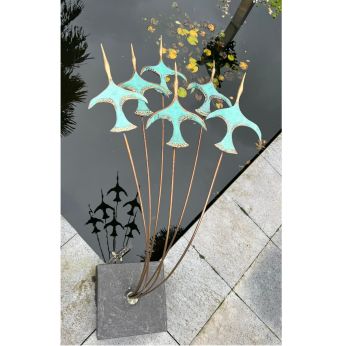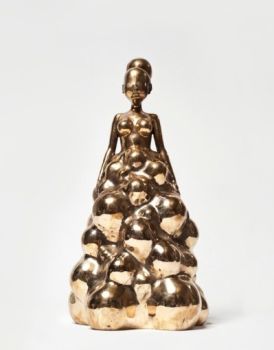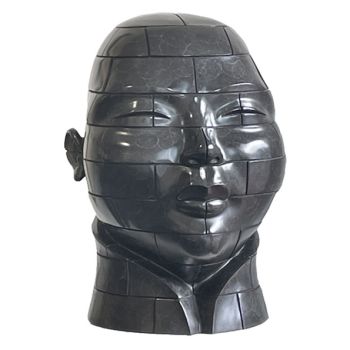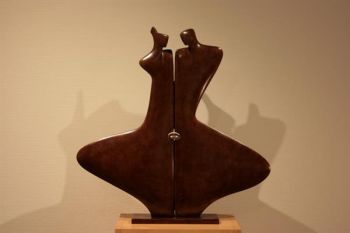A Remarkable Florentine Pax late 15th
Artiste Inconnu
BronzeOrMétalArgentDoré
28 ⨯ 13 cm
Actuellement indisponible via Gallerease
- Sur l'oeuvre d'artA gilt silver and niello pax frame and lunette of St. Francis receiving the Stigmata, anonymous Florentine goldsmith, 1518; and a partially gilt copper applique of the Virgin, Child and a winged-putto-head, ca. 1445-50, attributed to Maso di Bartolomeo or his circle (after designs by Luca Della Robbia)
A gold gilt silver and niello pax dated 1518 featuring a copper applique of the Virgin, Child and a wingedputto-head, ca. 1445-50, attributed here to Maso di Bartolomeo or his circle (after designs attributed to Luca Della Robbia). The maker of the present pax was a master goldsmith active in Florence during the first quarter of the 16th century. The architectural style of the pax descends from the small gilt-wood tabernacle frames made in late 15th century Florence like those produced by the workshop(s) of Giuliano (1432-90) and Benedetto da Maiano (1442-97). The present frame is remarkable in its construction. It is comprised of at least twenty-five separate pieces, masterfully integrated to produce a seamless finished work. Its maker leaves only nine expertly blended rivets exposed on the obverse and its assembly is equal to the complex facture of other important pax commissions of its time. The majority of the pax frame is cast in silver with gold gilding applied to its obverse using a mercury amalgam. Some surface areas are rubbed due to wear and leave an exposed tarnished silver surface that gives the illusion of exposed bronze beneath the gilding. The reverse backplate and handle of the pax are silver, also heavily tarnished (Fig. 02). The reverse features a dedicatory inscription above the handle: F • K • F • F (made for [Fieri Fecit] “F K”). The base of the reverse is inscribed with the date: MD/XVIII (1518). The pax handle features an engraved religious emblem possibly indicating an owner, church, treasury mark or religious order.
An early context for the use of the Virgin-Child applique is found on two paxes: one at the National Gallery of Art (NGA) and another corresponding pax formerly in Berlin. Its frame, flanked by Corinthian columns and topped by a triangular pediment, represents one of the earliest small style of Florentine tabernacle frames distinguished from its earlier Gothic counterparts.
While the NGA and Berlin Virgin-Child examples are casts of good quality, reproducing the round contours of the original model and employing the same gilt features that leave the flesh-tones exposed in bronze, the previously unpublished applique on the present pax surpasses the aforesaid examples in its quality of casting and definition of details. The crispness along the folds of drapery, between the digits of the hands, feet and strands of hair is exemplary. The sculptor’s tool marks on the original wax or clay model appear reproduced in the fresh and lively character of the bronze, not subdued through aftercasting. It’s reasonable to suggest the present cast could be the prototype from which all other casts descend. The steadfast dependence on the direct casting method employed for bronzes in Florence during the 15th century increases this possibility. - Sur l'artiste
Il peut arriver qu'un artiste ou un créateur soit inconnu.
Certaines œuvres ne doivent pas être déterminées par qui elles sont faites ou elles sont faites par (un groupe d') artisans. Les exemples sont des statues de l'Antiquité, des meubles, des miroirs ou des signatures qui ne sont pas claires ou lisibles, mais aussi certaines œuvres ne sont pas signées du tout.
Vous pouvez également trouver la description suivante :
•"Attribué à …." A leur avis probablement une oeuvre de l'artiste, au moins en partie
•« Atelier de …. ou « Atelier de » À leur avis, une œuvre exécutée dans l'atelier ou l'atelier de l'artiste, éventuellement sous sa direction
•« Cercle de… ». A leur avis une oeuvre de la période de l'artiste témoignant de son influence, étroitement associée à l'artiste mais pas forcément son élève
•« Style de … ». ou "Suiveur de ...." Selon eux, une œuvre exécutée dans le style de l'artiste mais pas nécessairement par un élève ; peut être contemporain ou presque contemporain
•« Manière de… ». A leur avis une oeuvre dans le style de l'artiste mais d'une date plus tardive
•"Après …." A leur avis une copie (quelle qu'en soit la date) d'une oeuvre de l'artiste
•« Signé… », « Daté… ». ou « Inscrit » À leur avis, l'œuvre a été signée/datée/inscrite par l'artiste. L'ajout d'un point d'interrogation indique un élément de doute
• "Avec signature ….", "Avec date ….", "Avec inscription …." ou "Porte signature/date/inscription" à leur avis la signature/date/inscription a été ajoutée par quelqu'un d'autre que l'artiste
Artwork details
Related artworks
Artiste Inconnu
UN PLAT EN ARGENT LOBBED INDONÉSIEN INSOLITElate 17th
Prix sur demandeZebregs & Röell - Fine Art - Antiques
Artiste Inconnu
A rare Japanese export lacquer medical instrument box1650 - 1700
Prix sur demandeZebregs & Röell - Fine Art - Antiques
1 - 4 / 12- 1 - 3 / 3
Artiste Inconnu
Oeuf de Pâques de présentation russe en argent1880 - 1899
Prix sur demandeH.W.C. Dullaert Art & Antiques Dealer
Artiste Inconnu
Ancienne icône en bois russe: Archange Gabrielearly 17th
Prix sur demandeKunsthandel H.W.C. Dullaert Icons
1 - 4 / 24Artiste Inconnu
UITGEBREIDE FEESTDAGENIKOON MET PASSIECYCLUS19th century
Prix sur demandeHeutink Ikonen
1 - 4 / 24Lambertus Zijl
Portrait of Juliana, queen of the Netherlands (1948-1990)1900 - 1950
Prix sur demandeKunsthandel Pygmalion
1 - 4 / 24

